
Slow cookers are an easy, efficient way to create a variety of delicious meals, from fiery chilli con carnes and tasty chicken curries, to rich vegetable casseroles and simple, flavourful stews.
As appliances, they create little in the way of mess, require next to no input after prep time and they only use about the same amount of energy as a 60-watt light bulb.
In short, slow cookers are fantastic things. A busy professional can pop the ingredients in before he or she leaves for work, and by evening have a delicious home-cooked meal waiting for them with only a small amount to clean up afterwards.
Here then are a few slow cooker ‘do’s’ and ‘don’ts’, as well as some other helpful hints, tips and tasty tidbits. Bon appétit!
Summary
- Do You Need to Brown the Meat First?
- Don’t Lift That Lid!
- Why Cheaper Cuts of Meat are Best
- The Less Liquid, The Better
- Can you Use Use Frozen Meat?
- Is it Safe to Leave it On All Day?
- Why you Should be using LOW Setting
- How Your Slow Cooker could Save You Time, Effort and Money
- Check the Fat Content of Your Mince
- How Your Slow Cooker Can be Used For a Healthier Diet
- How much Electricity does a Slow Cooker use?
- Why you Should Pre-Heat Your Slow Cooker
- Plan Your Slow Cooked Meals in Advance
- Choose Your Vegetables Wisely
- How to Thicken your Slow Cooker Dishes
- Why you Should Keep Your Slow Cooker Clean
- Can Timers Give You Food Poisoning?
- Why you Should be Using Stock Pots
- Save That Lunch Money!
- Wait An Hour Before Serving Meat
- Why Slow Cookers are Great for Summer as well
1. Do You Need to Brown the Meat First?
Commonly, it is thought that you will need to ‘brown’ or even completely seal any meat before adding it to your slow cooker. This is not really the case.
Browning the meat first (known scientifically as the Maillard reaction) can be tasty, especially if your intent is to flavour the meet with stock or spices, but it really isn’t necessary with a slow cooker.
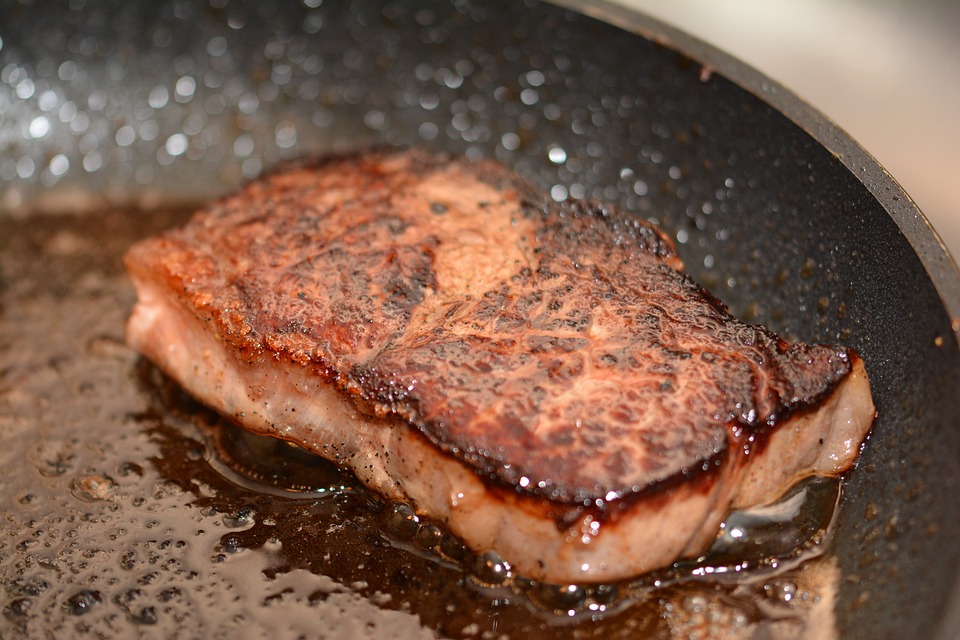
The major argument against browning first is that, during the cooking process, the meat will absorb juices from the ingredients while expelling its own juices into the sauce. Browned or sealed meat simply isn’t as absorbent and will not be as moist, so the other ingredients will not benefit as much from the presence of meat.
Having said that, raw meat will cook differently in the slow cooker, and the choice to brown the meat or not really boils down (pun intended) to personal preference.
2. Don’t Lift That Lid!
Oh, it is very tempting. Maybe you want to check that everything’s going OK, or give your marvellous meal a stir, or even just treat yourself to a cheeky whiff? Whatever your reasons, it is better for the food if you can resist the temptation to lift that lid.
Basically, opening the slow cooker allows valuable heat and moisture to escape and actually hampers the cooking process. The key word here is ‘slow’, as in the food takes a very long time to cook. Slow cookers work by building up heat over a long period of time. Opening the lid, even for a second, can add an extra 30 minutes to the cooking time, as well as adversely affect the flavour of your food.
Essentially, opening the lid during cooking is the same as opening the oven door whilst baking a cake, so try not to do it.
3. Why Cheaper Cuts of Meat are Best
The cheaper cuts of meat available at your local butchers or supermarket are usually high in fat or connective tissue, which makes them fairly lousy when fried in a pan. However, when they’re added to a slow cooked meal, these cheap, humble cuts can become totally delicious.
The arduous pace and steady increase in temperature of a slow cooker actually helps to break down all the gristle and fat, which in turn adds to the flavour of the meal.
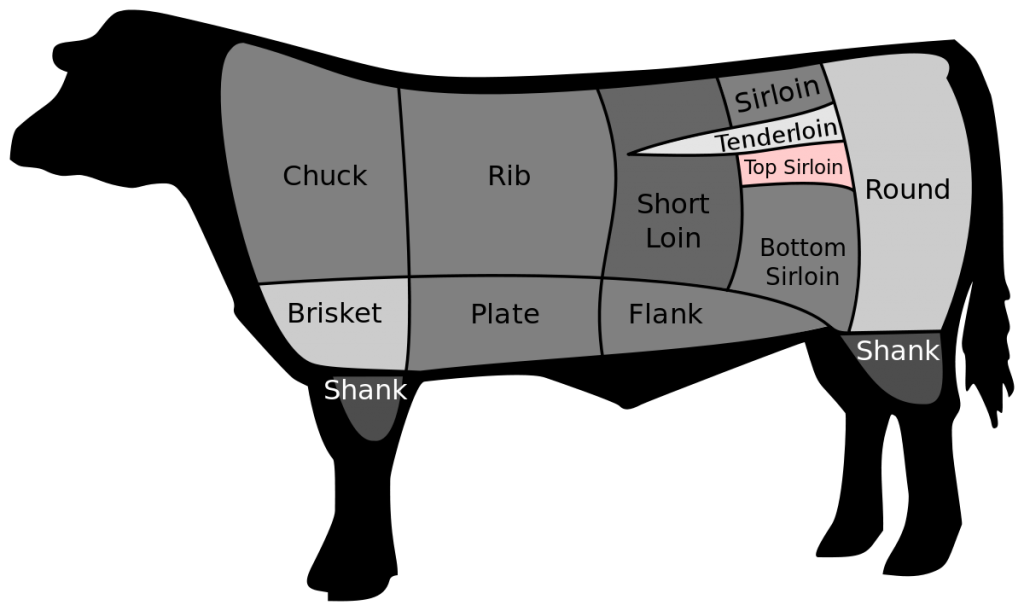
Moreover, the leaner, more highly valued cuts don’t actually cook as well in the slow cooker. In fact, some of these will even dry out and become tough and leathery.
Meat that comes from an animal’s most used muscles is often denser and tougher to eat than the more tender cuts. However, this isn’t a problem for a slow cooker, as it gently breaks down the collagen in the meat, rendering even the densest cuts soft, juicy and tender.
Using the slow cooker more will encourage you to spend less money on meat overall, whilst still getting a rewarding, protein rich meal in the evenings.
4. The Less Liquid, The Better
You might have noticed that there’s less space in your slow cooker than there is in your casserole dish. You might also have noticed that if you try to prepare a recipe (or work from a ready-made sachet), you end up filling the slow cooker up to the brim with water. Both of these problems have the same solution: use less liquid.
If you’re working to a recipe that was not designed with slow cookers in mind, you’d be well advised to cut the liquid measurement by around half.
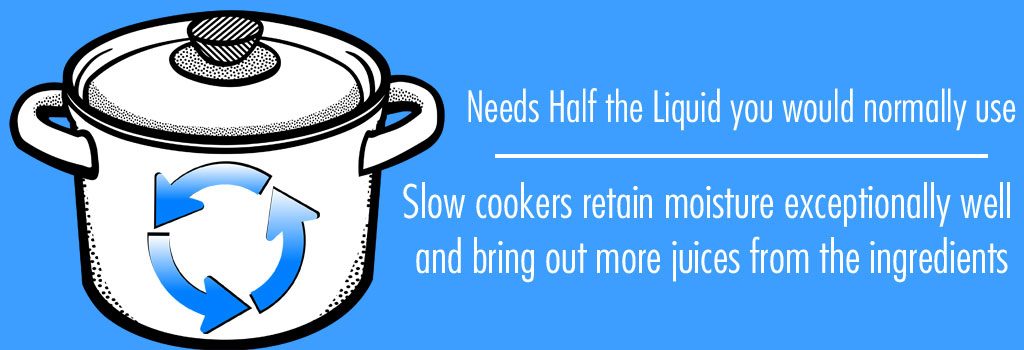
Slow cookers retain moisture exceptionally well and they also bring out more juices from the ingredients used in them, so you won’t need to use so much liquid.
In addition, nowhere near as much evaporation will occur in your slow cooker. A little bit of wine can really go a long way for most cooks (and some of us even put it in the food!), but too much can be totally ruinous to your meal.
Your worst-case scenario here is trying to make a delicious vegetable stew and ending up with a watery mess instead!
5. Can you Use Use Frozen Meat?
You’ve probably seen a lot of conflicting viewpoints about this one online. Some people are all for putting frozen meat into the slow cooker, while others still are dead against it.
So, is it safe to put frozen meat into your slow cooker?
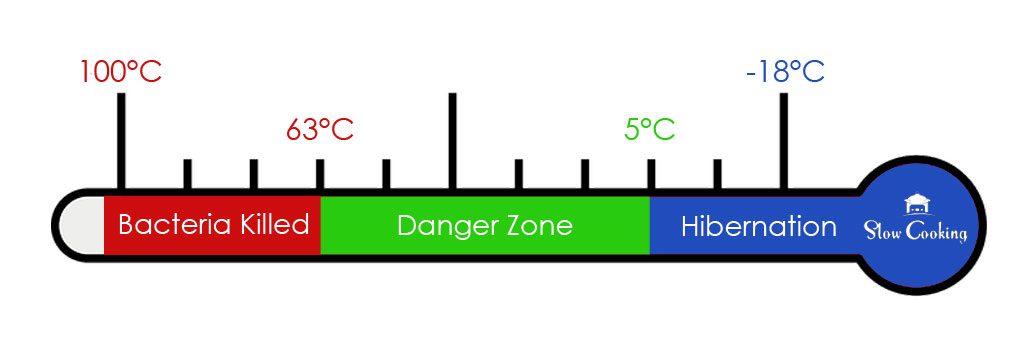
The slightly longer answer is that, whilst it is entirely possible to safely cook frozen meat in a slow cooker, it is also entirely possible (and indeed, even more likely) that you will contract food poisoning by doing so. This is because slow cookers can’t be relied upon to get frozen meat up to the bacteria destroying temperature of 63°C and above quickly or evenly enough. It just isn’t what they’re designed to do. They are, after all, ‘slow cookers’.
Frozen meat will spend too much time under the necessary temperature, which encourages bacteria to multiply to dangerous levels. So, while your meat may have defrosted, it may not have cooked for long enough, evenly enough or at a high enough temperature to completely eliminate the possibility of food poisoning.
All things considered, putting frozen meats into your slow cooker probably isn’t a risk you should take.
As a final note, fully defrosted meat should be fine.
6. Is it Safe to Leave it On All Day?
It is probably safe to leave your slow cooker unattended (this is, after all, one of the things they are designed for).
However, please be aware that this section is being written with no knowledge whatsoever of your slow cooker’s make, model or age. The conditions in your kitchen or the degree of electrical safety in your home are a mystery to us – and these things are major variables to the above statement. As such, we strongly advise due diligence on your part. Know your kitchen, know your slow cooker and know how to stay safe.
So, to reiterate, it is probably safe to leave the slow cooker unattended. Leaving a slow cooker on is not the same as leaving the oven or hob on; in fact, it’s more like leaving a light on (and uses about the same amount of power). Slow cookers do not carry a high voltage charge and are not, in most cases, made of flammable material. However, it never hurts to take precautions. Here are a few helpful hints.
- The slow cooker does generate a modest amount of heat, so keep it away from walls, sides and other appliances in order that said heat can dissipate safely.
- Always place the appliance on a hard, flat, heat proof surface.
- Be wary of frayed chords, dodgy electrical set-ups and generally unsafe conditions in your kitchen.
- Watch out for unusual smells coming from the appliance. If it feels hotter than it ought to (especially early on in the cooking process), un-plug it immediately.
- Keep the setting low.
- Older models are best not left unattended.
- Read all instructions carefully.
- Keep the lid on at all times.
- Don’t over-fill the slow cooker.
Fire safety experts do not recommend leaving any electrical appliance unattended at any time.
7. Why you Should be using the LOW Setting
A general rule to remember about slow cookers is ‘the slower, the better’.
Although it is true that one hour on the ‘high’ setting is the equivalent of about two hours on ‘low’, your food will really respond to the extra time spent cooking. The gentle, subtle heat really helps to bring out the flavour of whatever you’ve cooked.
Of course, the high setting works fine as well, but we reckon, if you can spare the extra time, you should always take the low road.
8. How Your Slow Cooker could Save You Time, Effort and Money
Try to avoid recipes that require a lot of prep time. When it comes to slow cooking, pre-preparation is just a waste of time.
One of the slow cooker’s great benefits is that you really can just chuck all the ingredients into it and leave your meal to cook by itself. You don’t need to add extra ingredients, stir the mixture regularly or constantly check your progress, so don’t do those things!
Your slow cooker exists for your convenience, so don’t try to use it for anything overly complicated. Instead, just trust in the simple equation ‘fresh ingredients + complementary flavours + time = a great slow-cooked dinner’.
Or, to put it another way, some cheap meat, a little seasoning and the best of your wonky box are all you really need for a perfect home cooked meal.
9. Check the Fat Content of Your Mince
Mince is a great family staple. It can be used in simple, classic recipes like spaghetti bolognaise, chilli con carne, savoury mince, shepherd’s pie, tacos, burritos and a lot more besides. You can buy almost any meat in mince form, from beef, pork and your slow cooker exists for your convenience, so don’t try to use it for anything overly complicated. Instead, just trust in the simple equation ‘fresh ingredients + complementary flavours + time = a great slow-cooked dinner’.
Or, to put it another way, some cheap meat, a little seasoning and the best of your wonky box are all you really need for a perfect home cooked meal.
lamb, to chicken, turkey and even venison.
Generally speaking, all mince is graded according to its fat content. ‘Low fat’, ‘lean’, ‘premium’ and etc are all terms that relate to the fat content of the meat.
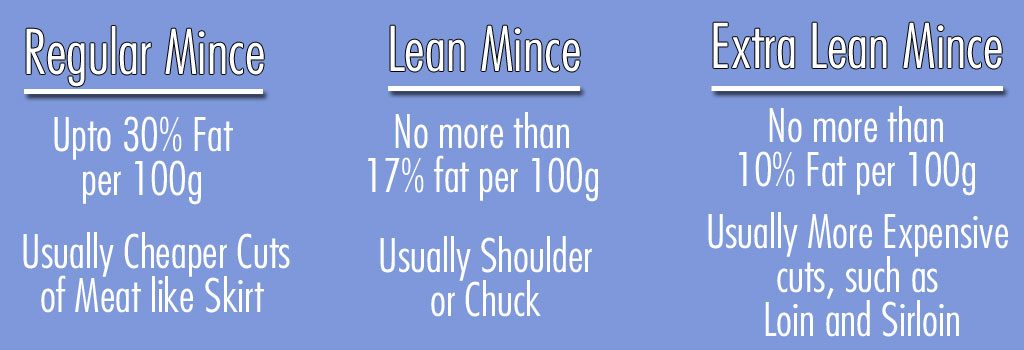
According to UK law, the maximum ratio of fat to meat available for sale is 30% fat, 70% lean. Mince with less than 4% fat is considered very lean. Check the packaging and you should see something like ‘10% FAT’ written somewhere on there. This is the fat ratio of the mince, We always use 5% fat in our recipes, because we
When choosing which product to purchase, you should avoid anything that looks grey or colourless and instead seek out the richest and most vibrant looking meat you can find. Fatty mince is better for things like home made burgers, while the leaner types of mince, although better for you overall, tend to dry out when fried for want of fat.
Earlier on in this piece, we espoused the virtues of buying cheaper cuts of meat (often with a slightly greater quantity of fat or connective tissue) for use in your slow cooker. This was (and is) good advice.
However, when it comes to mince, you’ll get the best results from leaner meat. Not only is it healthier for you, you also needn’t worry about it drying out during cooking, because the slow cooker will keep it nice and moist.
10. How Your Slow Cooker Can be Used For a Healthier Diet
We’d all like to eat healthier, but this is easier said than done. Sometimes you just want something ‘quick and easy’ when you get home. The trouble is that in the modern world, ‘quick and easy’ very often translates as ‘disastrously unhealthy’. In fact, we’re fairly certain that the phrase ‘quick and easy’ comes from the Latin, meaning ‘to order a Chinese’.
Generally speaking, slow cookers create healthier meals. They are also, (as attested to throughout this piece), thoroughly user friendly and very convenient. Slow cookers don’t require oils or fats, instead allowing the food to simmer in its own juices, which instantly makes them less fattening.
If you steam or boil your vegetables, a lot of the nutrition can be lost in the steam, evaporating into the extractor fan before you’ve had a chance to even get near it. Not so with a slow cooker, where the nutrients may leave the ingredients, but still never get further than the sauce.
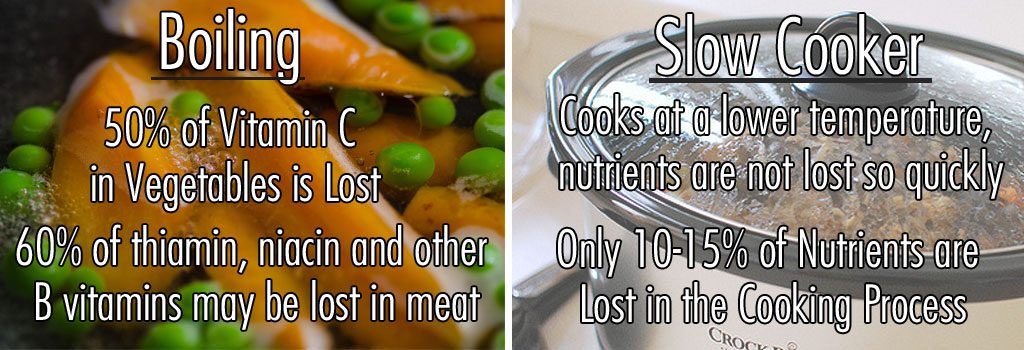
In addition, because the slow cooker uses a low heat for a long period of time, our bodies can gain full access to vitamins and minerals that would be destroyed during faster, more aggressive cooking methods.
If you get the timing right, your slow-cooked meal will be waiting for you as soon as you get home, which means that you’ll be less likely to snack before dinner or to munch your way through those ‘cook’s perks’ while preparing dinner. All of these little things can have a big effect on your overall diet.
Over time, habitual snacking will probably lessen, which will lower your overall intake.
Fresh vegetables and meat on a regular basis will lower your intake of processed foods, which thereby reduces your intake of fats, sugars and salts.
11. How much Electricity does a Slow Cooker use
One of the key selling points of slow cookers is their energy efficiency, but this popular notion may not actually be entirely accurate.
Whilst it is true that a slow cooker uses around the same amount of power as a 60-100 watt light bulb, it is worth mentioning that an oven turns on and off at various intervals, so that when you cook something, the energy usage is not constant. A slow cooker, on the other hand, is in continuous usage from the moment you turn it on in the morning to the time you switch it off in the evening, so the difference in energy usage is not quite as much as you might imagine.
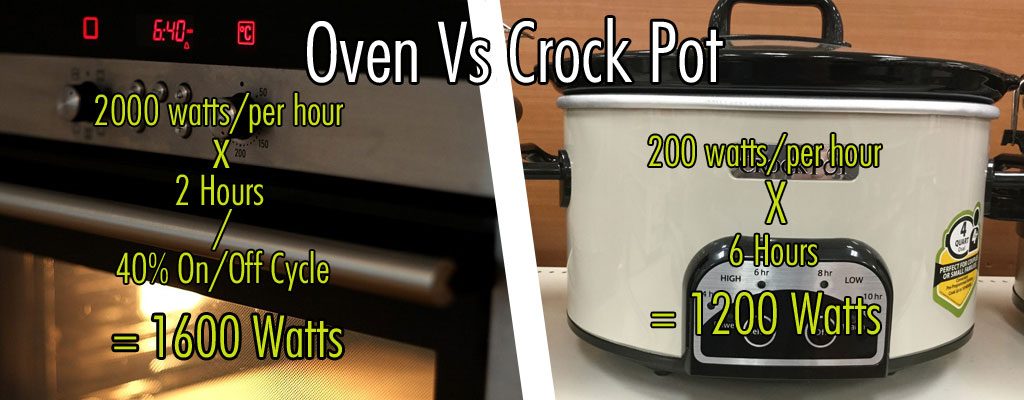
However, there are variables to consider here. A non-slow cooked meal is rarely cooked entirely in the oven, which means that the stove, the grill, the microwave and even the kettle could all be employed to complete the dish. The slow cooker, on the other hand thrives on having all the ingredients in one place at one time and so uses less power overall.
In addition, the hob or stove uses up much more power than a slow cooker. If a slow cooker, on low power, cooks for 8-10 hours, it will still only use about a third as much power as the same meal might if cooked for one hour on the hob.
Of course, ovens and stoves operate at different heat settings, which use differing amounts of power and take different lengths of time to cook. They also typically have four or more heat sources, which is why it is hard to make any sort of definite proclamation on the subject.
So much of it depends on what you are cooking, as well as how you choose to cook it. A quick Google search, then, will reveal just as many online sources hailing the energy efficiency of slow cookers as those denouncing it.
Overall, slow cookers generally do use less power than ovens or hobs, although this is not always the case. As you can hopefully appreciate, there are many factors to take into account here.
12. Why you Should Pre-Heat Your Slow Cooker
If you’re pre-cooking some ingredients, it will definitely pay off to get the slow cooker up and running at the same time.
After all, adding hot ingredients to a cold cooker simply means that the hot ingredients will cool down and then need to be re-heated again. It is basically wasting time.
Even if the ingredients are cold going in, a 20-minute warm up really does your meal the power of good.
It is worth noting, however, that some slow cookers actually heat up quite quickly and do not require preheating.
13. Plan Your Slow Cooked Meals in Advance
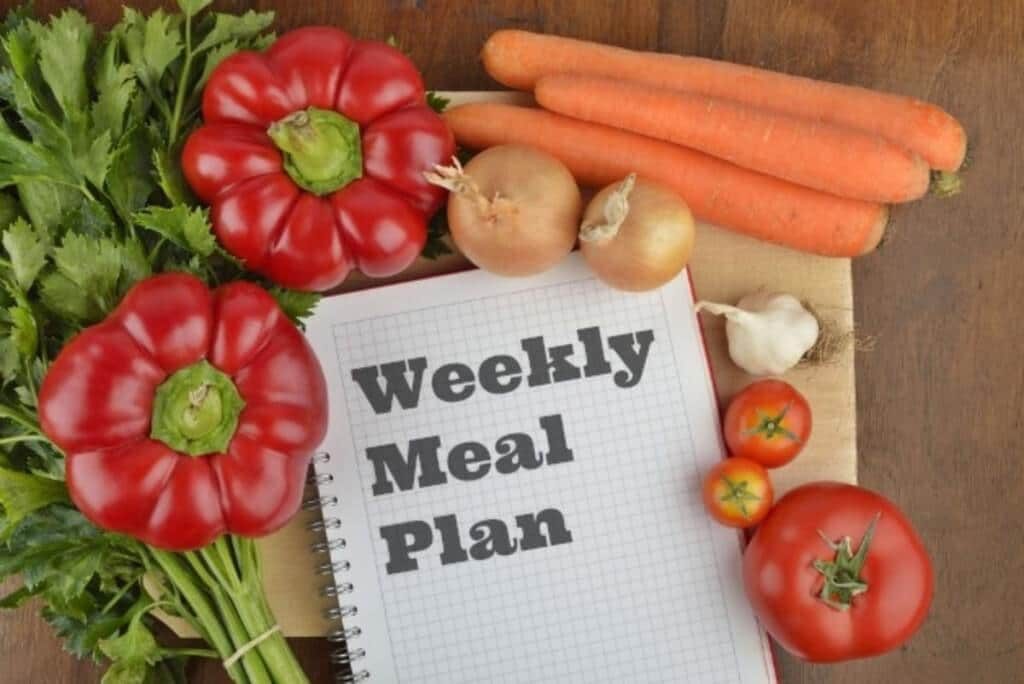
As with any kind of cooking, preparation is key. To really get the benefits from your slow cooker, prepare the ingredients the night before, then simply turn the cooker on when you leave the house in the morning.
Of course, you should place anything that needs to be kept chilled into the fridge.
Some sites will suggest putting the cooker’s removable pot into the fridge, but this is actually not recommended at all. For starters, the thing will be ice cold, and take a lot longer than necessary to heat up. Secondly, the food might take too long to heat up, which risks the food poisoning we spoke of earlier.
If you can make extra, either as another meal for another night, or a little something to microwave at work, this is also a great way to save money, energy and time.
There are more than enough slow cooker recipes online to keep us all happy for years; most are free to access, although subscription services are available.
For example, we recently unearthed this tasty looking curried mince that we’re eager to try.
By using recipes like these, you can plan your meals in advance, which allows you to not only eat healthier (and stop leaving it to the last minute, then ordering Chinese takeaway. Its OK, we all do it from time to time), but also to be more organised as well. You’ll be amazed by the variety of dishes a slow cooker can produce.
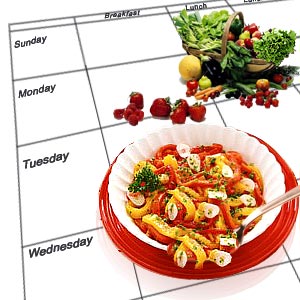
14. Choose Your Vegetables Wisely
Brace yourself, gentle reader; we’re about to get science-y.
Vegetable cells are held together by a polysaccharide named pectin. Pectin breaks down when exposed to heat, which is what causes vegetables to soften when cooked.
Pectin is very good for you, helping your body to guard against various ills such as heart attacks and strokes by lowering your cholesterol.
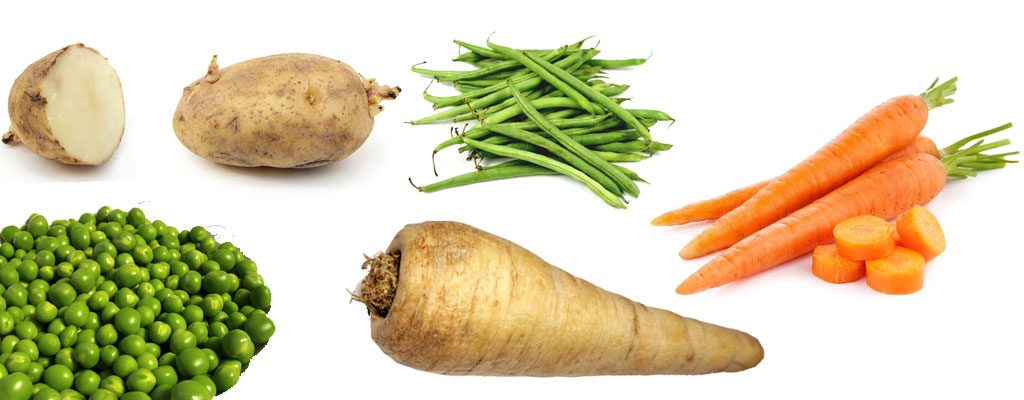
Vegetables such as Carrots, peas, potatoes, parsnips and green beans are all chock full of pectin. Because they are so rich in pectin, these vegetables will not go mushy in your slow cooker. Carrots are especially high in pectin, containing about 0.576 grams of pectin per large carrot.
If you like your veggies on the soft side, as we do, then you might want to add a little extra cooking time, or else fry them up a bit first, otherwise they might still be a little on the crunchy side when the food is dished up. Ultimately, it comes down to personal taste.
15. How to Thicken your Slow Cooker Dishes
A thickening agent becomes useful if your slow cooked meal is too watery. Remember, liquids don’t necessarily evaporate as much in a slow cooker, so stews, sauces and soups with too much liquid in them are commonplace when you’re starting out.
Without affecting the overall flavour of your meal, thickening agents can soak up any excess moisture, giving the sauce its desired consistency. Three of the main thickening agents used by chefs are flour, cornflour and arrowroot.
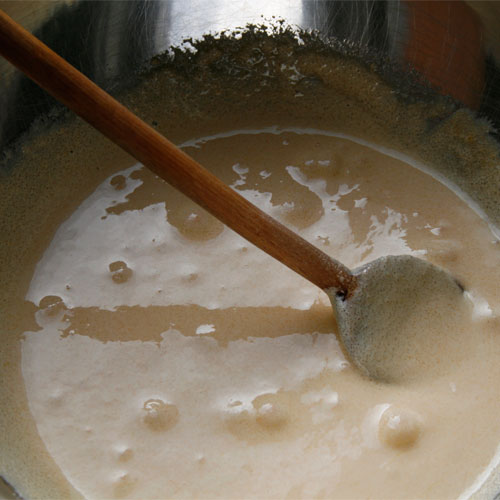
Arrowroot is used mainly in sweet food and cornflour is better suited to savoury, while plain flour can potentially be used in both.
Gluten flours are mainly made of starch (indeed, plain flour is about 75% starch). Since starch molecules absorb water, adding flour automatically thickens the sauce.
Cornflour, although also mostly made from starch, is naturally gluten free and is therefore even more absorbent, with around double the thickening power of plain flour (try saying that three times fast!). Arrowroot is also gluten free and highly absorbent.
Any of these can also be applied to meat, by coating in it before cooking. This approach prevents unwelcome ‘flour ball’ inclusions from getting into your meal.
16. Why you Should Keep Your Slow Cooker Clean
It is not immediately obvious how to clean a slow cooker. There, we said it.
This is especially true in the case of older models that lack removable pots. However, once you get the hang of cleaning them, you should find your slow cooker no more difficult to clean than anything else in your kitchen, in fact, it’ll probably be a fair bit easier.
First of all, you should always keep the exterior clean. If overfilled, some slow cookers can leak a little. It is also possible to spill ingredients down the sides in other ways, such as when dishing up. If these spillages dry up, they could end up smelling bad and going mouldy (especially in the case of meat), leakage is also a potential fire risk in certain circumstances, so we recommend wiping down the exterior with a damp cloth after each usage. It is also a good idea to clean beneath the cooker as well.
Sometimes, stains can build up on the inside of the cooker. This is something you’ll want to avoid, so if the stain is too tough to budge, you can always try filling the slow cooker with warm water and washing up liquid, then switching it to a low setting for half an hour or so. This should help remove the stains.
Scrubbing the pot with white vinegar and/or baking soda can also help to remove the more persistent stains.
17. Can Timers Give You Food Poisoning?
Electrical timer switches are, for the most part, a benign and useful invention. They offer the user more control over how they use their appliances, and can even be used to deter burglars. However, there is a reason that slow cookers rarely come equipped with built-in timers.
Put simply, these things can give you food poisoning.
If you must use one, the timer should only ever be set to switch the slow cooker on a maximum of two hours after the ingredients have been added to the pot. In the case of poultry, this should be reduced to one hour.
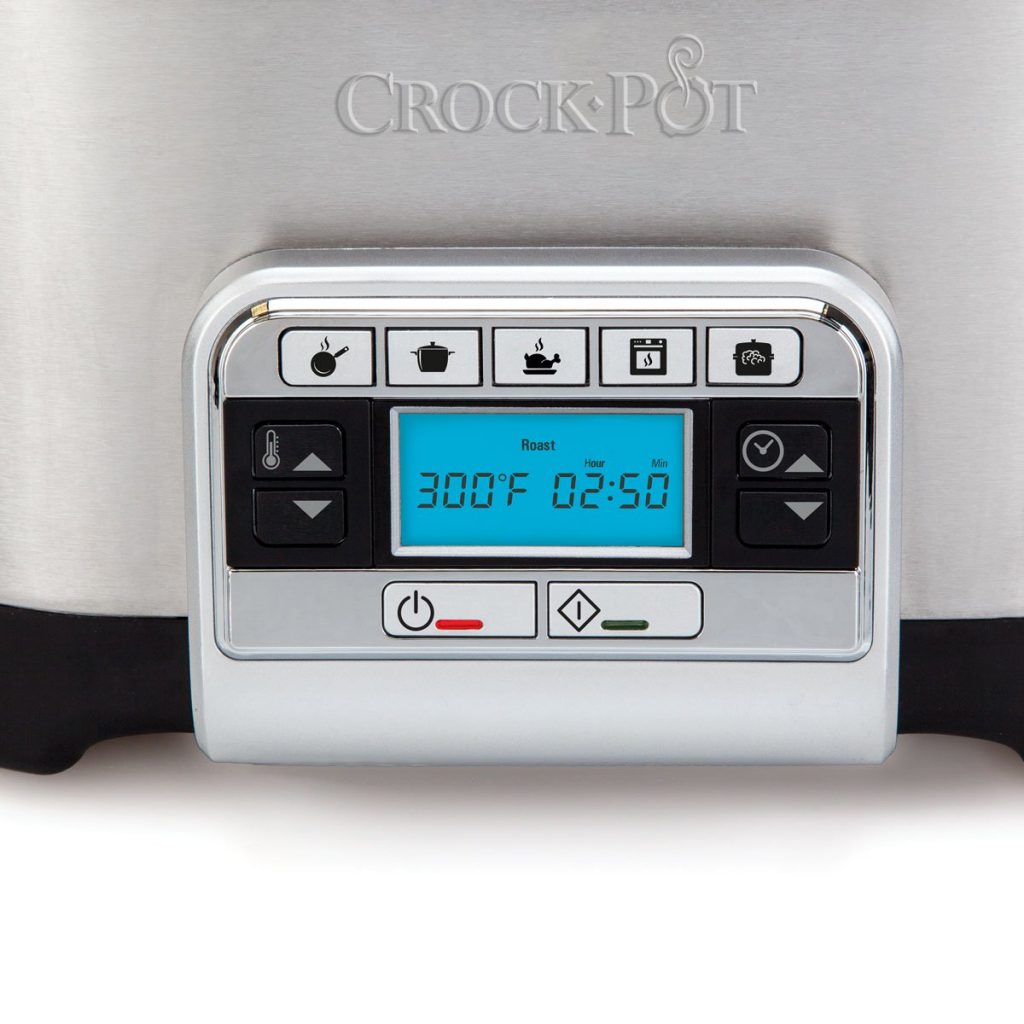
The reasons for this is simple; If you are out of the house for 8-10 hours, then it is tempting to set the timer to start a few hours after you leave the house. But raw, uncooked food left sitting out for hours at a time provides an ideal breeding ground for nasty bacteria (especially in the case of meats or other animal products).
In addition, electricians do not recommend using timers for anything that contains a heating element. Aside from the obvious fire hazards, the load can be too much for the switch to bear and has even been known to trip the fuse for the entire house!
So instead of coming home to the thick, inviting aroma of a slow cooked vegetarian stew, imagine instead coming home to a pitch black house where the freezer has defrosted, all the clocks need re-setting and the WiFi takes forever to return. Not fun.
18. Why you Should be Using Stock Pots
Adding stock to your various recipes is a great idea. Stock helps to bring out the flavour you’re aiming for, be it vegetables or that of a specific meat. It is a simple and relatively inexpensive way to improve the overall taste of your meals, slow cooked or otherwise.
While you can definitely use stock cubes in your slow cooker (though the ‘reduced salt’ variety is recommended for health reasons), it is probably better to use liquid or ‘jellied’ stock.
In addition to being significantly less salty, the liquid and jellied varieties of stock contain liquid fats, which better convey flavour than dried fats do. Because these fats are already in liquid (or almost liquid) form, these types of stock dissolve better into the mixture, thus integrating their own flavours more efficiently into your meal.
19. Why You'll be Eating for Weeks
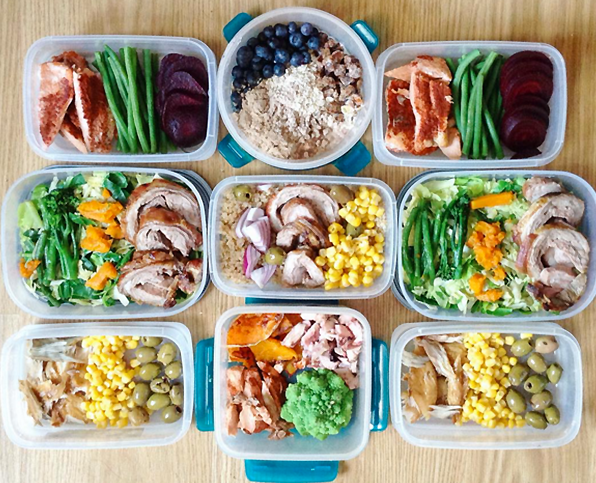
Picking up a sarnie, a drink and a snack on your lunch break might not seem like a great expense, but if you’re doing it 5 days a week, four weeks a month, 52 weeks a year – it’ll start to add up.
One of the many benefits of having a slow cooker is having the leftovers for lunch the next day. Many workplaces these days have a microwave in their staff room or employee area, so why not make the most of it? Bring in your leftovers along with a bread roll and a drop of fruit juice and you’ll get a fuller, healthier lunch, a burst of energy from all that fruit and veg and lower monthly outgoings overall.
Some meals (especially the spicy ones) actually taste better on the second day, as the ingredients have even longer to intermingle and infuse.
Remember, however, to always re-heat your meals thoroughly, especially if they contain meat. Ideally, your food should be piping hot throughout (having been stirred midway through re-heating) and should need a couple of minutes to cool down before you eat it. If in doubt, a quick Google search should provide you with guidelines.
So, to sum up, slow cookers can be real money savers in general, from cheaper ingredients, to lower energy bills and even having less to pay at lunch.
If you want to really split hairs, they even create less washing up, so maybe you’ll even spend a little less on water and washing up liquid.
20. Wait An Hour Before Serving Meat
When your meal has finished cooking, it is a good idea to turn off the slow cooker and leave it alone for an hour.
In the case of meat, this is an old chef’s trick known as ‘resting’ the meat. Basically, when the cooking process has ceased, the meat juices naturally redistribute through the muscle, which relaxes the meat fibres and makes the meat tenderer.
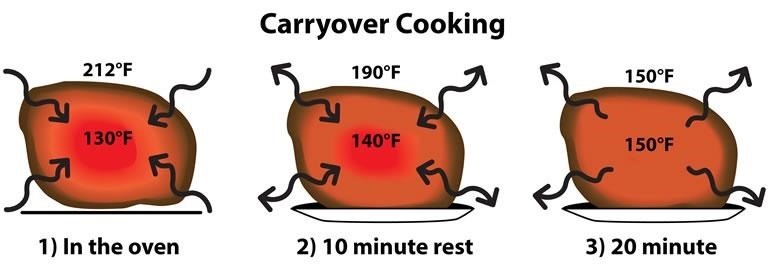
For bigger cuts of meat such as a whole chicken or brisket, the meat will need longer to rest. Five minutes per inch of thickness or ten minutes per pound are effective guidelines, but it is really up to you.
Don’t worry about your food getting cold, the slow cooker will have enough insulation and stored heat to keep it warm. It is worth noting, however, that it is not safe to leave cooked food sitting out for extended periods of time for reasons stated elsewhere in this piece.
21. Why Slow Cookers are Great for Summer as well
Because they make such great stews, soups and casseroles, it is tempting to think of slow cookers as winter survival specialists. After all, what could be nicer during the ‘dark when you leave, dark when you get back’ months than the great smell of winter veggies and tender, seasoned meat?
Well, all this is true, slow cookers are great winter appliances, but they are also brilliant in the summer as well.
One reason for this is that slow cookers don’t heat up your kitchen as much as your oven, stove or grill does.
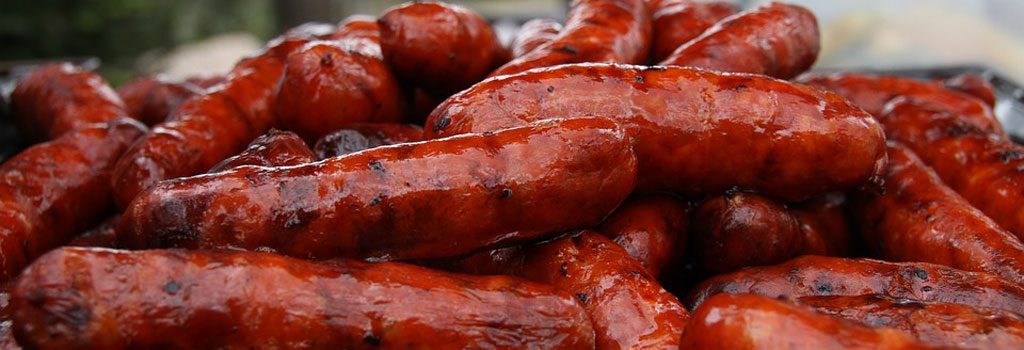
A slow cooker can also be used to pre-cook meat, which you can then finish off on the barbeque. The effect here is similar to a marinade or a glaze, but because the meat has been soaked in a moist environment, it will take longer to dry out. Along with that, it will reduce the chances of food poisoning, because all of your meat is fully-cooked beforehand.
Whatever you use it for, your slow cooker is a safe, reliable and versatile appliance that can provide good food for all the family, all year round.

